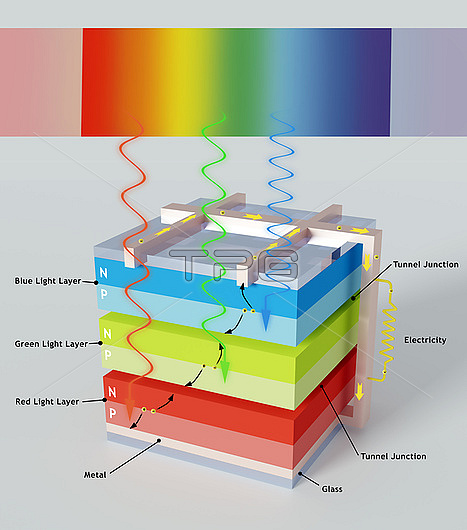
Multi-junction solar cell, illustration. Solar cells convert the energy from light into electrical energy through the photovoltaic effect. Photons in sunlight (wavy lines) hit the solar cell and are absorbed by layers of semiconducting material such as silicon. The semiconductor is 'doped' so that one layer contains mostly free electrons (n-type semiconductor) and one layer contains mostly free positively charged 'holes' (p-type semiconductor). The photons excite the electrons (yellow spheres), creating an electric current as the excited electrons and the holes are swept in different directions by the inherent electric field across the layered semiconductor. Multi-junction solar cells use layers of different semiconductor materials that absorb sunlight at different wavelengths. This increases the energy they able to harvest from sunlight.
| px | px | dpi | = | cm | x | cm | = | MB |
Details
Creative#:
TPG32550481
Source:
達志影像
Authorization Type:
RF
Release Information:
須由TPG 完整授權
Model Release:
N/A
Property Release:
N/A
Right to Privacy:
No
Same folder images:

 Loading
Loading